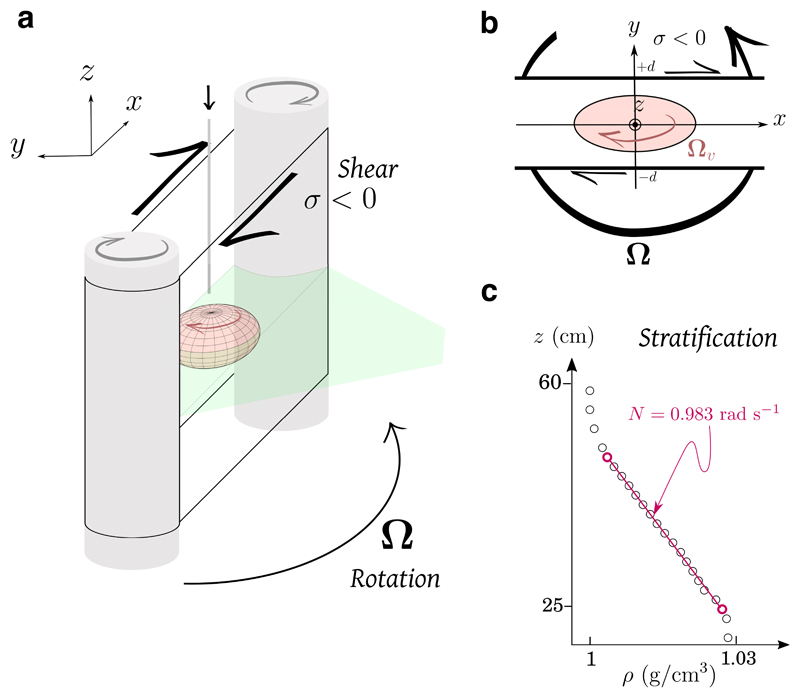Figure 1.
Simplified sketch of the experimental set-up. a. The shearing device is made of a PVC belt encircling two co-rotating cylinders. A capillary tube injects fluid in the gap between the membrane sides to create an anticyclone which is analyzed by performing Particle Image Velocimetry (PIV) in its equatorial plane. The represented device is placed inside a bigger tank which rotates at a rate Ω and the fluid is stratified using salt water. b. Sketch of an equatorial view. A linear shear is added via the action of two rigid PVC boundaries separated by a distance 2d. c. Example of a measured stratification, where ρ is the dimensional density. The error bars are smaller than the markers. The red line is a linear fit used to determine the buoyancy frequency N (equation (1)). For all the experiments in the main text, N = 1 ± 0.1 rad s−1.

